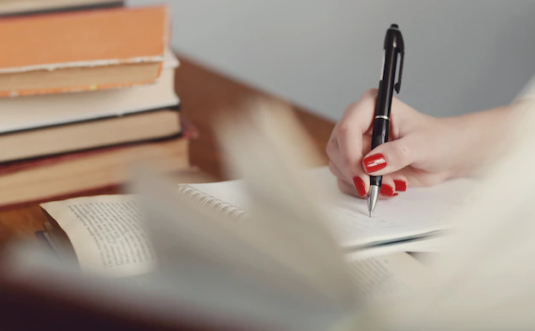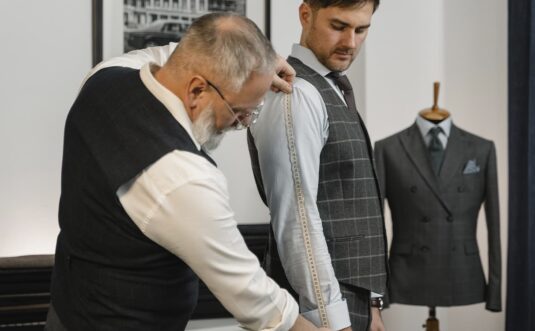Fashion is an ever-evolving art form that empowers individuals to express their unique personalities. At the heart of this creative industry lies the captivating realm of fashion dress design.
Introduction to Fashion Dress Design
Fashion dress design is the art of creating garments that encompass style, innovation, and functionality. It is a dynamic field that merges artistic expression with technical proficiency. Fashion designers translate their visions into tangible creations that grace runways, red carpets, and everyday wardrobes. The world of fashion dress design is a harmonious blend of aesthetics, craftsmanship, and individuality.
The Evolution of Fashion Dress Design
Fashion dress design has traversed centuries, reflecting the cultural, social, and political climates of each era. From the opulent gowns of the Renaissance to the rebellious styles of the 1960s, fashion has always been a mirror of society’s evolution. The constant reinvention of dress design has shaped the way we perceive beauty, gender roles, and personal expression.
Elements of Fashion Dress Design
Color Theory in Dress Design
Colors play a pivotal role in fashion dress design, evoking emotions and setting the tone for a garment. Designers carefully select hues to complement skin tones, convey moods, and create visual impact. Whether it’s a vibrant palette for a summer dress or a monochromatic scheme for an elegant evening gown, color theory forms the backbone of captivating dress designs.
Fabric Selection and Texture
The choice of fabric and its texture can elevate a dress design from ordinary to extraordinary. Designers consider factors such as drape, weight, and durability when selecting fabrics. From flowing chiffon to structured brocade, the right fabric enhances the silhouette, accentuates design elements, and adds tactile allure.
Silhouette and Shape
The silhouette and shape of a dress define its overall aesthetic and how it interacts with the wearer’s body. Fashion dress designers employ various techniques to create flattering silhouettes, such as darting, pleating, and gathering. From form-fitting sheaths to voluminous ball gowns, each silhouette tells a unique story and celebrates diverse body types.
Understanding Body Types: Creating Flattering Designs
Dressing for Hourglass Figures
Hourglass figures are characterized by balanced proportions, with a defined waistline and curvaceous hips and bust. Fashion dress designers emphasize the waistline and select fabrics that highlight the natural curves of this body type. A fitted bodice and flared skirt are often favored to accentuate the hourglass silhouette.
Enhancing Pear-Shaped Body Types
Pear-shaped bodies have narrower shoulders and a wider lower body. Fashion dress designers create designs that draw attention upward, such as A-line or empire waist dresses. These styles balance the proportions and celebrate the curves of pear-shaped figures.
Flattering Apple-Shaped Body Types
Apple-shaped bodies carry weight around the midsection, with broader shoulders and a fuller bust. Dress designs for apple-shaped figures focus on highlighting the legs and creating a more defined waistline. Empire waist dresses and A-line silhouettes work well to flatter this body type.
Celebrating the Athletic Body Type
Athletic body types have well-defined muscles and a lean physique. Fashion dress designers often experiment with form-fitting styles to showcase the toned physique. They may incorporate cut-outs, asymmetrical details, or strategic draping to create dimension and highlight the athletic figure.
Embracing the Petite Frame
Petite frames require dress designs that create the illusion of height and elongate the body. Fashion dress designers opt for shorter hemlines, vertical patterns, and high waistlines to visually elongate the petite silhouette. Avoiding overwhelming details and maintaining proportionality are key elements in designing for petite figures.

Exploring Dress Styles and Cuts
A-Line Dresses
A-line dresses are timeless classics that flatter various body types. The silhouette resembles the letter “A,” starting with a fitted bodice and gradually flaring out towards the hem. A-line dresses offer versatility and can be adapted for casual, formal, or bridal wear.
Sheath Dresses
Sheath dresses are sleek, form-fitting garments that follow the natural contours of the body. They exude sophistication and are often chosen for professional settings or cocktail parties. Sheath dresses offer a streamlined silhouette that accentuates curves without excessive volume.
Fit-and-Flare Dresses
Fit-and-flare dresses feature a fitted bodice that flares out into a voluminous skirt. This style is synonymous with femininity and grace. Fit-and-flare dresses can range from casual daywear to elegant evening gowns, depending on the choice of fabric and design elements.
Wrap Dresses
Wrap dresses are characterized by a front closure that wraps around the body, securing with a tie or belt. This style is universally flattering and adjustable, accommodating different body shapes and sizes. Wrap dresses epitomize effortless elegance and are popular choices for both casual and formal occasions.
Maxi Dresses
Maxi dresses are long, flowing garments that exude bohemian charm and offer comfort and versatility. They are ideal for summer days, beach vacations, or casual gatherings. Maxi dresses come in various silhouettes and can be styled for both day and night looks.
Embellishments and Detailing
Beading and Sequins
Beading and sequins add glamour and sparkle to dress designs. Fashion dress designers employ intricate beadwork and sequin embellishments to create visually stunning pieces. From delicate accents to all-over sparkle, these details elevate a dress from ordinary to extraordinary.
Lace and Embroidery
Lace and embroidery are timeless embellishments that exude romance and elegance. They add intricate patterns and textures to dress designs, creating depth and visual interest. Lace overlays, embroidered motifs, and appliqués are commonly used in bridal gowns and evening wear.
Ruffles and Frills
Ruffles and frills inject playfulness and movement into dress designs. Whether cascading down a skirt or adorning sleeves, these details add a touch of whimsy and femininity. Ruffles and frills can be incorporated in various sizes and placements, creating unique visual effects.
Pleats and Folds
Pleats and folds introduce structure and dimension to dress designs. They create dynamic lines and interesting shapes that capture attention. Accordion pleats, knife pleats, and box pleats are just a few examples of how designers utilize this technique to transform a dress into a work of art.

Fashion Dress Design Trends
1. Bohemian Chic
Bohemian chic embraces free-spiritedness, with flowing silhouettes, earthy tones, and nature-inspired prints. This trend celebrates individuality, with an emphasis on comfort and self-expression. Maxi dresses, off-the-shoulder styles, and floral motifs are hallmarks of bohemian chic fashion dress design.
2. Minimalism and Clean Lines
Minimalism focuses on simplicity and clean aesthetics. Fashion dress designers strip away excess details, favoring sleek silhouettes, monochromatic palettes, and precise tailoring. Minimalistic designs exude elegance through understated sophistication.
3. Bold Prints and Patterns
Bold prints and patterns make a statement in fashion dress design. From vibrant florals to geometric shapes, these eye-catching designs inject personality and vibrancy into garments. Dress designs featuring bold prints and patterns demand attention and exude confidence.
4. Sustainable and Ethical Fashion
Sustainability and ethical practices are gaining prominence in the fashion industry, including dress design. Designers incorporate eco-friendly materials, such as organic cotton or recycled fabrics, into their creations. Sustainable fashion dress designs promote conscious consumption and environmental responsibility.
5. Gender-Neutral Designs
Gender-neutral fashion dress designs challenge traditional notions of femininity and masculinity. Fluid silhouettes, neutral color palettes, and unisex styles blur the boundaries, allowing individuals to express their true selves. Gender-neutral dress designs embody inclusivity and celebrate diversity.
Dressing for Different Occasions
Casual Daytime Dresses
Casual daytime dresses offer comfort and style for everyday wear. They can range from breezy sundresses to shirt dresses or denim frocks. These dresses strike a balance between casual and put-together, providing versatility for various activities.
Cocktail and Evening Dresses
Cocktail and evening dresses are designed for special occasions and formal events. They exude sophistication and elegance, often featuring luxurious fabrics, intricate details, and flattering silhouettes. From sleek little black dresses to glamorous floor-length gowns, cocktail and evening dresses make a statement.
Formal and Black-Tie Events
Formal and black-tie events call for dress designs that embody refinement and grace. Floor-length gowns, tailored suits, and tuxedo-inspired dresses are customary choices. These designs are characterized by luxurious fabrics, impeccable tailoring, and attention to detail.
Wedding Guest Attire
Choosing the perfect dress as a wedding guest requires navigating dress codes and finding the balance between style and appropriateness. Fashion dress designers create dresses suitable for various wedding themes, from garden ceremonies to formal evening receptions. Floral prints, pastel hues, and elegant silhouettes are often favored.
Beach and Resort Wear
Beach and resort wear demand lightweight, breezy dress designs that embrace the relaxed atmosphere. Maxi dresses, kaftans, and flowy sundresses are popular choices for beach vacations and tropical getaways. These designs prioritize comfort, breathability, and effortless style.

The Role of Technology in Fashion Dress Design
3D Printing in Dress Design
3D printing revolutionizes the fashion industry, enabling designers to create intricate and customized garments. This technology allows for innovative shapes, textures, and patterns that were previously unachievable. 3D-printed dresses push the boundaries of fashion, merging technology and art.
Virtual Reality Fashion Shows
Virtual reality (VR) transforms the way fashion is presented and experienced. VR fashion shows transport viewers into immersive digital realms, providing a front-row seat to the latest collections. This technology allows designers to showcase their dress designs in innovative and engaging ways.
AI and Fashion Dress Design
Artificial intelligence (AI) is making its mark in fashion dress design. AI algorithms can analyze vast amounts of data, trends, and customer preferences to assist designers in creating marketable and trend-conscious designs. AI-powered tools also aid in pattern-making, prototyping, and production optimization.
Sustainable Practices in Fashion Tech
Fashion dress design is embracing sustainable practices through the use of technology. Innovations such as fabric recycling, dyeing techniques that minimize water consumption, and supply chain transparency are reshaping the industry. By incorporating sustainable practices, fashion dress designers contribute to a greener and more ethical future.
Building a Career in Fashion Dress Design
- Fashion Design Education and Training
Pursuing a formal education in fashion design equips aspiring designers with the necessary skills and knowledge. Fashion design programs offer courses in sketching, pattern-making, garment construction, and textile science. These programs provide a solid foundation for a successful career in fashion dress design.
- Gaining Experience through Internships
Internships are valuable opportunities for aspiring fashion dress designers to gain practical experience and industry insights. Working alongside professionals allows interns to understand the nuances of dress design, develop technical skills, and build a network within the fashion industry.
- Establishing a Fashion Label
Many fashion dress designers dream of establishing their own fashion label, showcasing their unique designs and creative vision. Starting a fashion label requires a combination of design talent, business acumen, and marketing skills. Building a brand identity, developing a business plan, and cultivating relationships with suppliers and retailers are essential steps in this journey.
- Collaborating with Fashion Brands
Collaborating with established fashion brands offers emerging designers exposure and credibility. Designers can collaborate on capsule collections or special projects, allowing them to showcase their talent to a wider audience. Collaborations often lead to increased visibility and opportunities for growth in the fashion dress design industry.
Conclusion
Fashion dress design is an art form that continues to shape the way we express ourselves through clothing. From the evolution of styles to the intricacies of silhouette and fabric selection, fashion dress design merges creativity with technical expertise. By understanding body types, exploring various dress styles, and staying abreast of fashion trends, individuals can unlock their personal style and create stunning outfits. As technology and sustainability play increasingly significant roles in fashion dress design, the industry continues to evolve, offering exciting opportunities for aspiring designers. Embrace the world of fashion dress design, unleash your creativity, and let your style be a reflection of your unique self.




